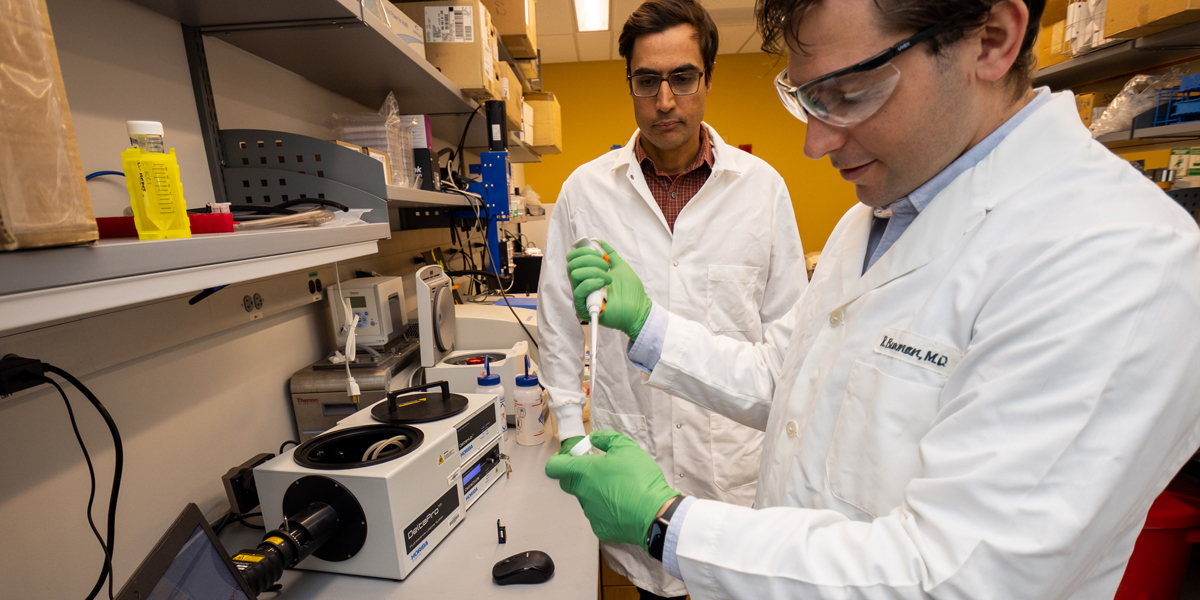
In the final seconds of the pharmaceutical commercial, the narrator’s voice speeds to a gallop. Television viewers often understand the message from the rhythm alone: it’s the list of side effects. Those lists promise to wane for next-generation treatments, thanks to research led by Sivaraj Sivaramakrishnan, a professor in Genetics, Cell Biology and Development, and graduate student Fred Sadler. In a new study published in Nature, the researchers and their collaborators suggest how an entire class of medications could be refined based on an improved understanding of receptors on the surfaces of human cells.
The research focuses on the most diverse group of membrane receptors: G protein-coupled receptors. The human body has more than 800 types of these receptors, often known as GPCRs. Over one-third of medications approved by the Food and Drug Administration target them, including antihistamines taken during allergy season, beta blockers prescribed for lowering blood pressure, and opioids administered for pain. Although these drugs target specific receptors, many GPCRs are very similar, which means the drugs can bind to the wrong receptor, causing adverse effects, like an increased heart rate brought on by an asthma medication.
Sivaramakrishnan and Sadler investigated the composition of the receptor protein, focusing on a region where the protein loops inside the cell. As the largest of three internal loops, the region is aptly known as the third intracellular loop. The parts of the protein on either side of the loop are responsible for structural changes when the receptor switches between active and inactive states, but the loop itself has attracted little attention. “This kind of floppy unstructured part got put on the back burner,” Sadler explains.
The research team also includes Michael Ritt and Yatharth Sharma, who are members of Sivaramakrishnan’s lab. The authors developed new protein engineering tools and combined them with computational modeling by collaborators Ning Ma and Nagarajan Vaidehi at the City of Hope, a cancer research and treatment center near Los Angeles. They inserted a fluorescent marker into the receptor and tracked how the third intracellular loop changed shape during activation. In a breakthrough for the field, they found that the loop ensures that receptors activate at the correct intensity, operating like an internal shutter that controls how much light enters a room. Significantly, the loops are distinct, even among otherwise similar receptors. It is as though the shutters are different sizes and colors, allowing passersby to identify whose window is whose.
This new understanding promises to transform how GPCR medications are designed. “We can target the loop and develop much more selective therapeutics,” Sivaramakrishnan says, noting excitement for the discovery at a recent biomedical conference. “It's a game changer.” The team has already identified a naturally occurring protein that uses the loop to modulate receptor activity, suggesting that pharmaceutical applications are near at hand. Based on this model, researchers will be able to develop more optimized medications, and future patients will encounter fewer side effects and enjoy more of the benefits.
— Jonathan Damery